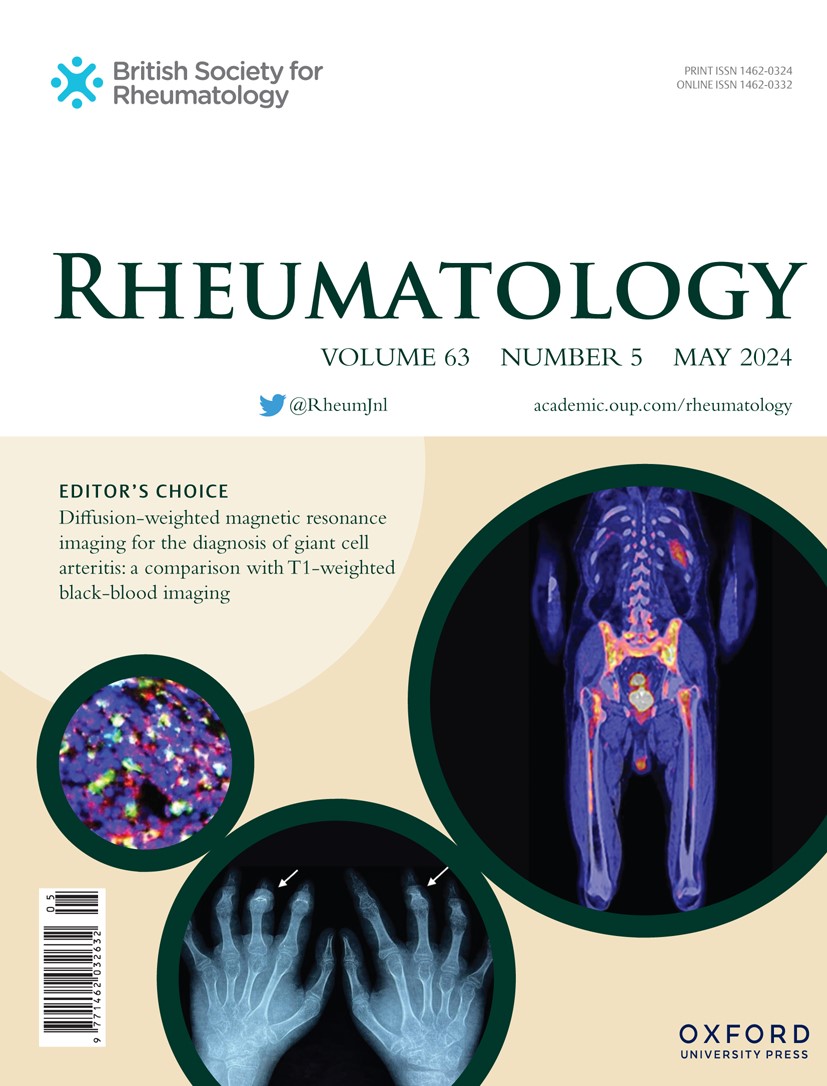E070 Lessons learned: developing a multidisciplinary group for paediatric chronic pain patients
IF 4.7
2区 医学
Q1 RHEUMATOLOGY
引用次数: 0
Abstract
Background/Aims A multidisciplinary team (MDT) approach is best practice for managing chronic pain by supporting the psychological and physical challenges faced, including difficulty attending education and social isolation. However, with varying capacity among chronic pain specialists, treatment is often delayed. The group intervention model can support multiple patients more efficiently, while increasing understanding of pain and non-pharmacological interventions. Here, we share lessons learned in the development of a paediatric chronic pain group intervention. Methods The chronic pain service at Royal Manchester Children’s Hospital (RMCH) developed a face-to-face group intervention with psychology, physiotherapy, and occupational therapy approaches for patients (11-17 years old) and their parents. We explored attendance rates and family feedback given for not opting into the group and questionnaire responses from attendees following completion of the group. Professionals provided feedback during MDT meetings following the group. Results Parents/carers and patients identified barriers to attending the group as: taking time off work, patients missing education, childcare for siblings, travel distance to RMCH, difficulty attending the group due to pain, and patient anxiety around attending a face-to-face group. Professionals identified barriers of implementing the group as: limited space, variable attendance and/or attrition rates, limited staff support to help reduce attrition, and lack of funding for a more therapeutic space. It has also been difficult to capture longer term change and social benefits within the short time frame that the group takes place. In response to parent/carer and patient barriers, multiple formats of the group have been trialled. We have developed options to access a virtual group and a self-guided pain management pack for families unable to attend in person. We also provide a 1:1 pain management course for patients who are too anxious to attend the group. The face-to-face group format was also adapted to reduce the number of sessions requiring missed work or education and to allow use of pacing skills to manage pain. We have also observed several benefits of the group, including, providing families with introductory knowledge and skills around chronic pain management in a digestible way. We have observed connections made between patients and parents who can relate about their pain experiences. Further, professionals have expressed satisfaction with working cohesively to provide more comprehensive support to families. Conclusion Ultimately, given the complexity of this patient population, individualised work is typically required in addition to the group. However, we have found that group intervention has served well as a foundational support for patients with chronic pain. Finally, we have learned that there continue to be many gaps within paediatric chronic pain services, and we hope to develop more targeted services to increase access to foundational support earlier in patients’ care. However, this will require greater staff and resource capacity to do effectively. Disclosure D. Graham: None. M. Wheeler: None. C. Sergaki: None. H. Ronksley: None. T. Hutton: None.经验教训:建立儿科慢性疼痛患者的多学科小组
背景/目的多学科团队(MDT)方法是通过支持所面临的心理和身体挑战(包括上学困难和社会隔离)来管理慢性疼痛的最佳做法。然而,由于慢性疼痛专家的能力不同,治疗往往被推迟。小组干预模式可以更有效地支持多名患者,同时增加对疼痛和非药物干预的理解。在这里,我们分享经验教训,在发展儿科慢性疼痛组干预。方法英国皇家曼彻斯特儿童医院(RMCH)慢性疼痛科对11-17岁患者及其父母采用面对面的群体干预方法,包括心理治疗、物理治疗和职业治疗。我们调查了出勤率和未选择加入小组的家庭反馈,以及小组结束后参与者的问卷调查。专业人员在小组之后的MDT会议上提供了反馈。结果家长/护理人员和患者认为参加小组的障碍为:请假、患者缺课、照顾兄弟姐妹、到RMCH的距离、因疼痛而难以参加小组,以及患者对参加面对面小组感到焦虑。专业人员确定了实施该小组的障碍:有限的空间,可变的出勤率和/或流失率,有限的工作人员支持以帮助减少流失率,以及缺乏资金来提供更多的治疗空间。也很难在小组成立的短时间内获得长期的变化和社会效益。为了应对家长/照顾者和患者的障碍,该小组已经尝试了多种形式。我们已经为无法亲自参加的家庭开发了访问虚拟小组和自我指导疼痛管理包的选项。我们还提供1:1的疼痛管理课程,为患者太急于参加小组。面对面的小组形式也被调整,以减少需要错过工作或教育的会议次数,并允许使用步调技巧来管理疼痛。我们还观察到该小组的几个好处,包括,以一种易于消化的方式为家庭提供有关慢性疼痛管理的入门知识和技能。我们观察到病人和父母之间的联系,他们可以将自己的痛苦经历联系起来。此外,专业人士表示满意,他们齐心协力,为家庭提供更全面的支援。最终,鉴于这一患者群体的复杂性,除了群体外,通常还需要个性化的工作。然而,我们发现群体干预已经很好地为慢性疼痛患者提供了基础支持。最后,我们了解到儿科慢性疼痛服务仍然存在许多差距,我们希望开发更有针对性的服务,以增加患者早期护理的基础支持。但是,这将需要更多的工作人员和资源能力才能有效地做到。D.格雷厄姆:没有。惠勒先生:没有。C. Sergaki:没有。H. Ronksley:没有。赫顿:没有。
本文章由计算机程序翻译,如有差异,请以英文原文为准。
求助全文
约1分钟内获得全文
求助全文
来源期刊

Rheumatology
医学-风湿病学
CiteScore
9.40
自引率
7.30%
发文量
1091
审稿时长
2 months
期刊介绍:
Rheumatology strives to support research and discovery by publishing the highest quality original scientific papers with a focus on basic, clinical and translational research. The journal’s subject areas cover a wide range of paediatric and adult rheumatological conditions from an international perspective. It is an official journal of the British Society for Rheumatology, published by Oxford University Press.
Rheumatology publishes original articles, reviews, editorials, guidelines, concise reports, meta-analyses, original case reports, clinical vignettes, letters and matters arising from published material. The journal takes pride in serving the global rheumatology community, with a focus on high societal impact in the form of podcasts, videos and extended social media presence, and utilizing metrics such as Altmetric. Keep up to date by following the journal on Twitter @RheumJnl.
 求助内容:
求助内容: 应助结果提醒方式:
应助结果提醒方式:


